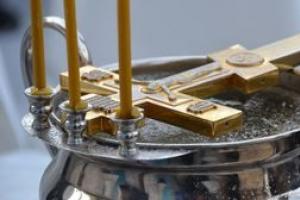Bonsai is the art of growing miniature copies of nature's creations plant origin, which conquered first Japan and then the whole world. A skillful likeness of a selected representative of the flora is formed with one’s own hand, so this requires a lot of patience, time and knowledge. In this article we will tell you how to grow a bonsai tree at home and what care it requires.
Choosing a tree for bonsai
In order to grow a beautiful bonsai tree at home without much hassle, it is best to choose one of the plants listed below, about which gardeners have extremely positive reviews. The photos will help you see what such a green pet will look like.
- Indoor types of citrus fruits: lemon, calamondin;
- Ficus benjamina;


- Decorative varieties of apple trees;
- Barberry;
- Hawthorn;
- Maple.

These are just some of the most popular options. Growing bonsai can be done from a variety of plants that are found everywhere: in parks, forests, gardens. You can also purchase seedlings in nurseries. The price will depend on the type of tree chosen and its height.
Growing Bonsai from Seeds

There are two types of shrub and tree seeds suitable for exotic bonsai. One type of crop can be immediately used for germination, while the other part undergoes a period of hibernation, during which the sprout must wait out the cold season. Stratification at home will serve as an imitation of winter.
- For a period of 3-5 months, the seeds of the bonsai tree are placed in sphagnum moss or wet sand, then the container is put in the refrigerator. Positive temperature regime and a moist environment will help the seed prepare to grow. When it is placed in a warm place, the sprout will quickly awaken;
- You can grow bonsai from seeds from spring until the very beginning of the autumn season. For seedlings that grew at the end of summer, it is necessary to use lighting, which is indispensable in the autumn-winter period;
- To successfully germinate seedlings and make their first months of life easier, you need to take peat tablets, soaked and absorbed moisture, or a light sand-peat substrate. Until the sprouts appear, the container is kept under film in the dark. The air temperature depends on the type of tree being grown;
- The greenhouse must be ventilated to prevent rot and condensation. When the first shoots appear, fresh air must be present in the room, then the seedlings are transferred to light. If necessary, they are fertilized and watered using a complex composition.

The bonsai plant is replanted when it reaches 10-12 cm in height. In this case, the main root is shortened by 1/3 so that the green pet stops its vertical growth. The future trunk is immediately formed using copper wire.
Growing bonsai from cuttings
You can grow a bonsai with your own hands from cuttings. This method allows you to speed up the growth time compared to the previous option by almost a year. First you need to collect suitable cuttings. It is better to do this in the spring.
- Choose semi-woody or green shoots 5-10 cm in length and about 5 mm in diameter;
- Cuttings must be planted in sterile soil, additionally treated with hormonal powder (if possible).

A short master class on planting cuttings:
- Fill the bottom layer of a deep pot with a diameter of 15 cm about a quarter with a mixture of akadama and fine gravel in equal proportions;
- We fill the remaining space of the container with a soil mixture suitable for the selected plant;
- We remove all the branches at the bottom of the cutting, cut thick branches obliquely;
- If desired, we treat the cuttings with a special hormonal powder, which can be bought in plant stores;

- We insert the seedlings into the soil, leaving a sufficient gap between them;
- Carefully water the soil;
- We put the pot out of reach of straight people sun rays a place so that young bonsai leaves do not get burned;
- Lightly moisten the soil, but do not flood it;
- It will take several weeks until germination occurs. It will be possible to plant the shoots in a year, and after another couple of years it will be possible to begin forming the bonsai crown.
How to choose soil and pot for a bonsai tree

It is advisable to plant home bonsai in a shallow and small container so that it does not grow to enormous sizes. At the same time, it is necessary to form and trim some of the roots.
The bonsai pot is chosen very carefully. It is taken into account that from year to year the plant will become heavier and may become unstable, especially if it has a cascading, inclined or irregular shape. Consequently, for the “green friend”, which ranges in size from a few centimeters to a meter, ceramic bowls, containers or pots are made, usually massive, of different shapes and styles. Their bottom should have several drainage holes used for exit excess moisture and for fastening the future tree.
Scalding with boiling water or a hot solution of potassium permanganate is very suitable for treating the pot. This will protect your Japanese bonsai from root fungus.

The soil helps the tree retain moisture and provides nutrition, and also thanks to the soil, the roots of the plant are anchored in a small pot. Therefore, in order to grow miniature copies maples, oaks, lemons, lindens, etc. use a special substrate. This mixture, which is based on certain types of clay, is called akadama in Japan.
The granular substance is “flavored” with sand and fertile soil for good looseness and nutritional value:
- To grow flowering crops, take three parts of sand, seven parts of soil with turf and part of highly nutritious humus, which are mixed together;
- Deciduous bonsai trees grow well thanks to a substrate with three parts of washed coarse sand and seven parts of turf soil;
- Conifers love loose soil, consisting of two parts washed sand and three parts turf soil.

Before planting a bonsai, the soil must be sorted out and all excess that can damage the root system must be removed. The substrate is also sterilized and sifted, and drainage is made at the bottom of the container.
Bonsai crown formation
To give a miniature tree a beautiful, fancy shape, copper wire is usually used.
- First, all the branches from the lower part of the trunk and all the “dry wood” are removed from the plant. Next, select three main branches on the crown, which visually form a triangle with equal sides, and remove all remaining branches between them. You can also leave 2 or 4 branches - it all depends on your desire;
- To bend the trunk, remove the top soil layer from the roots and carefully tilt the trunk to the required angle. One end of the soft wire is dug in and fixed in the ground at the base of the trunk from the inside of the bend. The trunk must be tightly but carefully wrapped with wire to the base of the remaining branches, so as not to damage or tear off the bark;

- You can also create bends in bonsai branches using thin braided wire so as not to touch delicate plant tissues;
- It is necessary to remove the wire from the trunk of a formed tree after a couple of years, otherwise it may return to its original state. The branches can be released after six months;
- To maintain the aesthetic appearance of your bonsai, do not forget to regularly trim long shoots that have grown beyond the crown perimeter and old foliage to allow new young leaves to grow.
Video: Bonsai pruning and crown formation
How to care for a tree at home
Your main goal is to successfully water the miniature crop. After all, a shallow pot filled with roots and a small volume of soil create certain difficulties. Best fit drip irrigation or irrigation, which will allow you to moisten the substrate under the plant in doses, without blurring.
Only settled, melted or soft water is suitable for irrigation. During the growing season, green pets require a lot of moisture, and in the fall, watering is reduced and becomes less frequent.

Miniature plants respond well to algae-based mineral fertilizing, which is carried out every 2-3 weeks. You need to care for trees carefully, do not leave them without “food”, but most importantly, do not “overfeed”:
- In the spring season, with maximum growth, it is necessary to add 2 times more nitrogen to the fertilizer than phosphorus and potassium;
- In summer, the same proportions are used, but the concentration is reduced by 1/2;
- At the end of August, especially for deciduous crops, the content of phosphorus and potassium is increased by 2 times, and nitrogen is reduced;
- Fruiting and flowering shrubs, and trees require more potassium, which goes into the formation of ovaries and buds.
In winter, the tree requires the following care:
- In mild climates, plants are kept outdoors or on unheated terraces;
- In a small pot, the roots may be the first to suffer, so they are well covered and the substrate is dried a little;
- In spring, the bonsai flower awakens. Now it again needs to be watered, fed, and the crown and roots formed.

The video below will help you see the process of growing miniature plants more clearly. If you don’t want to wait a long time, you can buy an already formed tree. But its cost will be several thousand rubles. If you do not have the time and opportunity to carefully care for such a green pet, then make one, which, according to its aesthetic characteristics, will be no worse than a living one.
Video: How to care for a bonsai tree
Bonsai are dwarf, but at the same time absolutely healthy and very beautiful trees, which are grown in Japan. It is not so easy to grow bonsai according to all the rules, since these plants require special attention and care. If you want to start growing bonsai from seeds at home, then use the tips from this article.
Initially, bonsai originated in China, where it was called “pencai”, and only later it ancient art passed to Japan and developed there. Legend has it that one of the emperors wanted to build a miniature copy of his empire, and it was for this that these dwarf trees were grown. Today, these dwarf trees are increasingly used to decorate the interior with your own hands; not every housewife can grow them.
Forming a bonsai tree
To grow the right bonsai, you need to acquire the necessary skills, abilities and knowledge. This is a very complex art, but, nevertheless, fascinating and mysterious in its own way. Seeds, cuttings and layering can be used for planting. For their cultivation, wild trees of small sizes are taken, growing in strict conditions of the wild environment. Severe frosts, strong winds and long droughts stop or slow down the growth of the tree. Approximately the same tactics of influence are used in the art of bonsai.

Roots and branches dwarf trees They are pruned according to a special system, and the branches are also twisted and tied with copper wire. Unneeded buds, shoots and leaves are removed, and the trunks of the trees can be pulled back or bent so that they have the shape chosen by the owners. Bonsai growth is slowed down by the following actions:
- Compressing its roots.
- Minimum pot volume.
- Rough soil with almost no micronutrients.
- Lack of essential nitrogenous substances.
- Exposure to wind.
- Exposure to heating.
- Exposure to sudden cooling.
When there is an excess of light and an insufficient amount of nitrogenous substances in plants in the wild, chlorophyll grains stick together and die. Plants living in swamps where there is high humidity receive protection from excess sun - they have small leathery leaves and a fairly thick cuticle.

In addition to growth restrictions, bonsai has other rules that relate to the shape chosen for the tree. Naturalness and a form that complies with the rules are two components appearance dwarf tree. There are many generally accepted types of bonsai, differing from each other in shape and sometimes in size. And although, according to the general law, the height of a tree should not exceed thirty centimeters, now experts in this field have begun to grow larger trees.

Used tree species also influence general form the resulting bonsai tree. For example, coniferous wood will all year round pleasing to the eye, since it has no leaves that could fall off. Bonsai, distinguished by beautiful fruits or flowers, will show themselves in all their glory at certain times of the year. There are even species that have the brightest leaf color in the fall.
Types of bonsai for growing at home
As mentioned above, types of bonsai trees differ from each other in shape as well as placement in the pot. There are many of them, and here are the most common ones:
1. “Symmetrical” (tekkan) - a tree that grows straight and has strong roots. It differs in that it also has a wide trunk. The species used for it are very different; you can find birch, pine, and elm.

3. “Tilted” (shakan) - in contrast to the straight “tekkan”, a dwarf tree of this type is slightly inclined away from the vertical line.
4. “Bent by the wind” (kengai) – this bonsai is similar to the “shakan”, but it is tilted even more, as if a strong wind had been blowing on it for many years. Sometimes such a tree can even fall below its pot. Branches of this type also correspond to the effect of a strong and long wind - they have one direction. At the same time, it is important that the kengai pot is stable, because it is not surprising that in this case it is important to maintain balance in the composition.

5. “Dead tree” (sharimiki) - a tree that has no bark. At the same time, it really seems that it is dying or is no longer alive.
6. “Two trunks” (kabudati) – this is a forked trunk and a common crown. There are also two trees in one pot, but they usually grow from the same point.
7. “Hieroglyphs” (bunzings) - such a tree has a crown of leaves only at the top of the branches, of which the trunk is almost devoid. It is believed that coniferous species in this case will look especially interesting.
8. “Multi-stemmed” (ese-ue) – like “kabudachi”, this is not a single tree, but several bonsai trees combined in one pot. In this case, an imitation of a miniature forest appears.
9. “Half-cascade” (han-kengap) - the base of this type of bonsai tree grows straight up, but then the trunk begins to slope down. In this case, the stability of the container in which the bonsai grows is also important.
In addition to the tree itself, the pot may contain tiny houses and figurines, and the ground is often covered with small stones or green moss. From a bonsai tree you can create an entire composition that imitates a natural landscape.

Bonsai care at home
When purchasing a ready-made tree, you need to know the rules for caring for this plant. After all, bonsai must be pruned on time, fed correctly and provided with the right amount of water. It is in winter that especially large shoots are removed from it and trimmed according to the chosen shape. For such operations, only clean and sharp instruments are used. When replanting, it is necessary to remove the main, thick roots of the tree to ensure slow growth.

The bonsai tree is watered frequently, although not very abundantly. It is impossible not to notice that the amount of moisture required also depends on the species, because, as is known, coniferous trees need a smaller portion of water than deciduous trees. Spraying the tree is highly advisable. Every week in the summer, a dwarf tree needs to be fed, not with ordinary fertilizers, but with special ones intended specifically for such trees. In winter, this is done only once a month.

Growing bonsai at home, as well as caring for it, require compliance with certain rules. In this case, you will be able to grow beautiful trees to decorate your interior in the style of ecological minimalism. Experiment and expand your collection indoor plants new species.
Culture bonsai originated in China and Japan.
Translated from Japanese “bon-sai” ( Chinese word- “pun-sai”) means “wood in a bowl.”
However, a bonsai is not just a container tree, it is a true work of art that requires many years of work. In the eastern tradition, bonsai-style trees are classic interior elements and landscape design.
Bonsai is a whole language of symbols. Some of the miniature trees resemble inhabitants of sea coasts, bent under cruel winds, others - alpine plants, branches hanging fancifully from the rocks, while others, on the contrary, look serene and simple - like a meadow tree located in the middle of a sunny island of tranquility.
In nature, the shape of a tree is formed under the influence of wind, sun and relief, and a bonsai master imitates natural forms with his own hands - using a knife, pruning shears and wire guides.
|
– the age of the tree is about 20 years. The shape of the tree is not ideal - after all, this bonsai was formed by a beginner amateur. |
This miniature linden 30 years. This very beautiful bonsai, made by the German Dieter Arndt, has already repeatedly won prizes at various exhibitions. |
A classic bonsai is a miniature copy of a life-size tree on a scale of 1:100.
In Japan, they believe that a pine tree looks like an old man, and a deciduous tree looks like a young girl. Therefore, miniature pines and junipers are usually planted in rough bowls irregular shape- made of wood or stone. Deciduous bonsai are placed in elegant ceramic vessels.
Bonsai have been grown for decades. And the older and more beautiful the bonsai becomes, the more expensive bowls it is transplanted into, emphasizing the nobility of the composition. In Japan, these bowls are custom-made by hand so that the vessel perfectly complements the bonsai artist's design.
Making a bonsai yourself is very difficult and time-consuming, but also exciting. Let's look at the stages of growing a bonsai tree.
 | Choosing a blank tree for bonsai First you need to choose a plant - it is best to take not a street specimen, but a young plant that originally lived in a container and is already adapted to such conditions. You can also grow a seedling specifically for creating a bonsai - but this will take longer. The roots of a young plant are shortened and planted in a flat bowl. The initial bowl is taken as simple as possible, undecorated. |
 | Trimming the top of a tree In spring, the top of the tree is cut off and side shoots. After this, the tree begins to gain trunk thickness, but its height will remain small. It is better for the plant to spend the summer outside, but for the winter, bonsai are placed in frost-free rooms - their roots are not adapted to frost. |
 | Regular pruning of branches and roots In subsequent months and years, pruning is repeated many times. Branches, especially thick ones, should be trimmed very carefully. For pruning, you should purchase a special pruning shears with a concave blade and make sure that its blades are sharp. Pruning with such pruning shears causes minimal damage to the tree - the cut areas heal faster. Every year, the future bonsai should be removed from the bowl and its roots trimmed. |
 | Buds for growing crowns When the trunk of the required thickness is formed, several buds are left on the tree for the development of branches. From this moment, work begins on the shape of the bonsai crown. |
 | Main branches for the bonsai crown skeleton You need to wait until the branches form. After this, several branches are left in the bonsai for further crown formation, and the rest are cut off. |
 | Shaping bonsai branches To give shape to bonsai branches, wire - aluminum or copper - is used. The thickness of the wire should approximately correspond to the thickness of the branches. The wire is carefully wrapped around the trunk and branches of the tree, giving them the desired direction. For opposite branches use one piece of wire. The tips of the branches are pinched to improve branching. |
 | Regular formative pruning of branches Next comes the most interesting part. The tree will gradually grow in the direction that the wire sets it. Adjust the wire as you watch the bonsai grow. Regularly trim young shoots to help the tree branch better and remain compact. |
 | Transplanting a bonsai into a decorative bowl When the bonsai is ready, you will need to select the appropriate bowl for it and think through the entire arrangement. |
Photos of bonsai trees
|
If the bonsai is made from fruit tree or shrub, then it continues to bloom and bear fruit at the usual time for its kind - like hawthorn in this photo. |
This maple for more than 80 years! With a skillful hand Bonsai masters have formed a multi-tiered crown on the tree. There is a deep bowl under this bonsai, since the height of the vessel should be proportional to the diameter of the crown. |
|
Bonsai from juniper, the crown of which is formed by a semi-cascade. An irregularly shaped bowl was selected from the tree, which imitates a depression in a rocky slope. |
|
|
Bonsai trees should be advantageously positioned on stands and well lit - so that a garden visitor can admire them first from afar, and then, coming closer, examine their filigree crown. |
|
|
Gardens in oriental style often decorated with bonsai. Characteristic for Japanese garden– a red bridge, stone lanterns, miniature trees and giant cereals – sedges, bamboo and others. However, if you follow this example and decorate your garden with miniature trees in the summer, do not forget to protect them from frost in winter and autumn. The specificity of the root system of bonsai does not allow it to winter outside in mid-latitudes. |
|
Bonsai is an art that came from Japan. Indoor bonsai is a miniature tree growing in a small bowl. This is an exact replica of a real tree, usually at a scale of 1:100. In this article you will be able to understand what bonsai is and how to form it at home.
Fruiting bonsai
Bonsai is not just a miniature tree. It has characteristic features: a thickened trunk, a correctly formed crown, a height from 20 cm to 2 m. This is a full-fledged tree, but in miniature. Translated from Chinese, "poong sai" means "tree in a bowl" - miniature copies have been grown for decades. And the older the tree, the more beautiful pot it is transplanted in Eastern countries.
As an art, bonsai originated in China as early as 200 BC. e. The Japanese brought it to perfection several centuries later. The hobby became widespread primarily among the common people. The lack of opportunity to plant a garden near the house was compensated by growing mini-trees.
Creating a bonsai at home is not difficult if you take proper care of it. The growth rate must be constantly regulated by pruning the root system. There are several styles of bonsai in art. Before growing a tree, you need to decide what kind of tree you would like to see on your windowsill.
Bonsai styles
The choice of container for the tree will depend on the style. Cascading or sloping styles require choosing a heavier, more stable bowl that will outweigh the weight of the sloping crown. There are many styles, of which the most commonly used are:

For beginners, it's best to start with the tekkan style. And if you manage to master the technique of growing bonsai, you can experiment with others.
Choosing a Bonsai Plant
Trees and shrubs that acquire a lignified trunk and branches as they grow are suitable for bonsai. It is necessary to choose a plant that is suitable for the surrounding climatic conditions. It is better not to choose plants with large flowers, fruits, or leaves for creating miniatures.
From coniferous trees For bonsai, cypress, thuja, pine, juniper, and larch are often chosen. Deciduous trees - birch, maple, hornbeam, willow, oak. Flowering plants for bonsai look impressive: acacia, pomegranate, citrus fruits, peach, plum, magnolia.

Suitable for bonsai different types trees.
For indoor growing, it is better to choose non-deciduous plants that can grow all year round. Among indoor flowers, ficus, gardenia, dracaena, and cordyline are often used as a basis. For beginners, portulacaria africanica and ficus benjamina are ideal.
What you need for growing
To care for a bonsai you will need a set of certain tools. For a beginner, two or three main ones will be enough to form a crown.
- Concave pliers are necessary for cutting wire and cutting branches right down to the trunk - so that there are no stumps or burrs left.
- Convex nippers. With their help, unnecessary convex areas, parts of the trunk, and roots are removed from the trunk. The instrument, which has a spherical head, creates a cut that heals quickly.
- Special scissors for cutting roots. Necessary when pruning thin roots. You can also use special nippers. They differ from convex ones by having a head that follows the contour of a sphere, but has a straight cutting edge.
- Tweezers with a curved tip are necessary for removing excess buds, dead leaves, and plucking out pine needles.
When indoor bonsai become a permanent hobby, and not a short-term hobby, you can purchase a professional set of tools.
Growing Bonsai
Creating a bonsai begins with choosing a plant and preparing the container and soil for planting. Next, you will need to make efforts to achieve growth not of the crown, but of the trunk. Caring for bonsai involves not only planting the plant and forming the crown, but also observing other nuances.
Choosing a pot
Sloping styles require stable pots, such as clay or ceramic. The container should not violate the integrity of the composition. For bonsai with a dense, spreading crown or several trunks, choose wide, shallow bowls. For plants with bare roots, tall, narrow pots are suitable. Narrow and deep containers that resemble vases are suitable for cascading styles.

The pot should ensure the stability of the composition.
The height of the walls should be no less than the diameter of the trunk, the width should be 2/3 of the length of the plant. Bonsai pots must have drainage holes. If clay or ceramic containers do not have them, drill them yourself. The tree must be rooted in a standard deep container. The initial formation process takes about 2 years, after which the plant can be transplanted into a permanent bowl.
Bonsai soil
Growing bonsai requires poor soil. It slows down the growth of the plant. The optimal mixture consists of 1/3 clay, and half from peat or rotted leaves, the rest is filled with coarse sand or small stones.
For deciduous trees, it is better to take 7 parts of clay soil and 3 parts of sand. For flowering ones - 6 parts clay, 3 parts sand, 1 part leaf humus. For coniferous trees, a mixture of clay and sand is made in a ratio of 6:4. Before use, the sand must be washed and calcined in the oven. It can be partially replaced with vermiculite.
It is better to collect the soil yourself in April, when the snow has melted and the soil has almost thawed. Store-bought mixtures usually include peat and garden fertilizers, so the bonsai will grow intensively in them, but this is not necessary. Before use, the soil is disinfected by boiling it in a sieve and water for about 30 minutes or calcining it in the oven.
First planting
When planting, the tree must be buried in the soil to thicken the trunk. At the same time, trim the root system, leaving only the roots growing to the sides. This must be done in the future with each transplant. The formation of a horizontal root system is required to slow growth.
Rooting should take place in a shaded place - bonsai does not like direct sunlight. After planting, the soil needs to be watered and compacted, then the plant must be quarantined for 10 days. Bonsai is isolated from other plants, to open air if necessary, accustom gradually.
Accommodation
The required light intensity depends on the type of plant chosen. However, most trees do well in a well-lit location without direct sunlight. During the day, from 11.00 to 16.00, it is better to shade the plant and periodically turn different sides towards the light. This is necessary for uniform formation.
If the plant does not have enough light, the shoots will be thin, the petioles will be elongated, and the leaves will stretch towards the light. In this case, additional illumination with a fluorescent lamp or phytolamp will be required. Bonsai must be protected from drafts.
Watering
In a shallow container, the soil dries out faster than in standard pots. When planting, the soil is compacted, so it may not absorb moisture well. To ensure that the earthen ball is well saturated, the bonsai is usually watered using the immersion method.
To do this, dip the bowl completely into a container filled with water for a few seconds. If you water at the root, then until water begins to seep through the drainage holes into the pan. The excess is drained after half an hour.
In between waterings upper layer the soil must dry out. In summer, it is necessary to water the bonsai often, sometimes daily, in winter - once a week, sparingly, to avoid overcooling of the soil. The frequency also depends on the needs of the plant - some species easily tolerate drought, while others instantly lose their turgor.

Blooming bonsai tree.
Water the bonsai in the morning or evening, avoiding water getting on the leaves in bright light. sunlight. Deciduous varieties require additional spraying. The water should be soft, filtered, rain and melted water are suitable. Its temperature should be several degrees higher than the air temperature in the room.
Top dressing
Bonsai should be fertilized throughout the year. In summer and autumn, fertilizing is applied once a week, in winter and autumn - once a month. A specialized fertilizer for bonsai or a regular one for indoor plants is suitable. It must be diluted in proportions that are 2-3 times weaker than those recommended by the manufacturer.
Bonsai should not be fed if the plant is weakened, has just been transplanted, or has been pruned. There is also no need to fertilize before or during flowering. Coniferous trees need to be fed 2 times less than other plants. Fertilizer is applied to the soil after watering.
Creating a wireframe
You need to start forming a style immediately after planting the tree in the primary pot. To give the plant the desired shape, use copper or aluminum wire. One end of the wire needs to be buried and strengthened in the soil, and then wrapped around the trunk and branches, forcing it to grow in a given direction. Its thickness should be the same as the branches.
Select 3 main branches on the tree. To form the required frame You will need additional pieces attached to the main wire. It should fit snugly to the trunk and branches, but not damage the bark. Its length should be at least 1.5 times the area to be wrapped.
For delicate branches, use thinner wire in the winding. The frame is removed from the branches after 6-8 months, but the wire from the trunk is removed no earlier than after 1.5-2 years. After this, the bonsai is transplanted into a permanent bowl.
Bonsai transplant
The first transplant of a young tree is done in the second year of growth, in early spring. The plant is transplanted into a permanent bowl, again cutting off all the roots going down. Transfer time different varieties plants may vary, but usually the appearance of buds indicates the need. Flowering trees are replanted after the end of the flowering period - in the fall.

Pruning the root system during transplantation.
Transplantation and pruning of roots should be done when they have filled the entire pot. This can be understood by their germination into drainage holes. Before removing, the lump of earth must be moistened generously with water. If you remove the plant from the pot and realize that there is still room for roots to develop, do not cut them, just replace the soil.
When replanting, the taproot and thick roots are removed with pruning shears if the lateral roots are well developed. If the lateral roots are weak, then only part of the taproot is removed, and those growing to the sides are formed using wire. Thickened roots are left above the ground, which adds naturalness to the composition. The soil can be covered with a layer of green moss.
Bonsai formation
In order for an ordinary plant to acquire the characteristics of a bonsai, it is necessary to begin its formation after transplanting it into a permanent bowl. You can achieve a thicker trunk by slowing down the growth of the tree. To do this, resort to the following tricks:
- They make cuts on the trunk, reducing the flow of juices. The tree releases sap to heal wounds and this slows down its growth.
- The trunk is tied with wire at a short distance from the ground. Due to this, the trunk becomes thicker and the tree grows slower. The wire should only compress the upper tissues and interfere with the circulation of juice. When the trunk above it thickens, it is removed and transferred to another place.
- To form the crown, branches are pruned. Pinching and pruning are done in the spring or throughout the year, depending on the plant.
Trimming and pinching
In the spring, after new buds appear, all overlapping branches of the tree are cut off and young shoots are pinched at the level of 1-2 pairs of leaves. Flowering plants do not prune until the end of this period. The pruning tool is disinfected, and the cut areas are sprinkled with crushed coal.

Formation of a bonsai crown.
With intensive shoot growth, periodic pruning may be necessary throughout the year. The more often you do this, the thicker and smaller the crown will be. Use scissors to remove branches that are too long and interfere with the overall composition.
Bonsai is a fascinating art that can be learned at home. When the tree takes on the required shape and is planted in a permanent bowl, all that remains is to produce annual pruning branches and periodic replanting.
A smaller copy of a tree called a bonsai will become a real highlight of your garden on the windowsill. But not a purchased miniature, but one grown at home. And the highest aerobatics is growing a tree with your own hands.
The birthplace of bonsai is Sunny Japan. The name translates as “tree in a pot” (you can use a bowl or tray for planting). The second translation option is “tree pruning.” Growing bonsai is a centuries-old art that, until recently, was available exclusively to Japanese monarchs. And today it is accessible even to a novice gardener. To get started, prepare the following tool:- Pliers that have a concave shape, for trimming a thin part of the trunk;
- Scissors for thick branches and creating an even cut;
- A small file, the blade of which is 15 cm;
- Scissors with thin ends;
- Scissors whose ends are blunt.

















